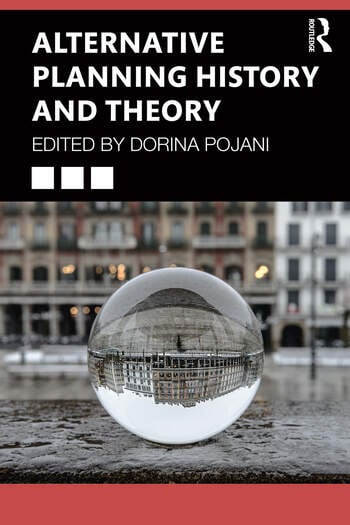Alternative Planning History and Theory
Title: Alternative Planning History and Theory
Editor: Dr Dorina Pojani
Publisher: Routledge (2023)
This book includes 12 newly commissioned and carefully curated chapters, each of which presents an alternative planning history and theory written from the perspective of groups that have been historically marginalised or neglected.
In teaching planning history and theory, many planning programs tend to follow the planning cannon – a normative perspective that mostly accounts for the experience of white, Anglo, Christian, middle class, middle aged, heterosexual, able-bodied, men. This book takes a unique approach. It provides alternative planning history and theory timelines for each of the following groups: women, the poor, LGBTQ+ communities, people with disabilities, older adults, children, religious minorities, people of colour, migrants, Indigenous people, and colonised peoples (in South Asia and Sub-Saharan Anglophone Africa). To allow for easy cross-comparison, chapters follow a similar chronological structure, which extends from the late 19th century into the present. The authors provide insights into the core planning issues in each time period, and review the different stances and critiques.
Each chapter of Alternative Planning History and Theory includes the following pedagogical features:
- A boxed case study which presents a recent example of positive change to showcase theory in practice
- A table which lays out an alternative planning history and theory timeline for the group covered in the chapter
- Suggestions for further study comprising non-academic sources such as books, websites, and films.

